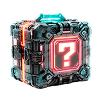Free-to-Own (F2O) — a new concept in the world of blockchain games and NFTs, offering free distribution of digital assets from the very beginning. Unlike the familiar «free-to-play» or «play-to-earn», the model emphasizes fair ownership and active participation in the development of the ecosystem. It has already attracted the attention of investors, developers, and players around the world. Let’s explore how it works, why it matters, and what advantages and drawbacks it may bring.
- Origins and essence of the Free-to-Own model
- Mechanics and key elements
- Economy: developers and players F2O
- Real cases and implementation examples
- Advantages, risks, and tips in Free-to-Own model

Origins and essence of the Free-to-Own model
The Free-to-Own idea emerged in 2022 thanks to Limit Break studio, founded by Gabriel Leydon, previously the creator of Machine Zone. The company stated that the classic «free-to-play» model was outdated, while the «play-to-earn» approach was too speculative and unstable. The new format aimed to combine the advantages of both systems: no entry barrier and long-term value for users.
Instead of selling initial NFTs, the project distributes them for free. Holders instantly become part of the ecosystem and are motivated to contribute to its growth. This approach helps build a more sustainable community, where value is generated through participation, not just initial investments.
Additionally, the model builds trust between players and developers. While companies previously earned revenue upfront through sales, now they are incentivized to invest in the product’s long-term development. This philosophy is closer to traditional gaming, where value lies in engaging gameplay rather than token economics. It makes Free-to-Own attractive to the mass market.
Mechanics and key elements
The mechanics of Free-to-Own combine several fundamental components that define the rhythm of the entire ecosystem. For the model to succeed, distribution must not be a one-time event, but a foundation for long-term interaction between players and developers. These elements make F2O a dynamic and evolving system where participation delivers real benefits.
-
Free mints — users receive NFTs without payment, lowering the entry barrier.
-
Asset generators — initial NFTs may grant rights to new drops or additional items.
-
Secondary market — holders can resell tokens, while the developer earns royalties.
-
NFT utility — tokens should not be just images but provide access to gameplay, quests, or content.
-
Community and events — active users engage in project life, participate in contests, and receive rewards.
This list shows that Free-to-Own is built on the combination of free ownership, secondary trading, and community engagement. Each of these components works as a building block in creating an ecosystem where players feel like co-creators of the project. Importantly, the model encourages developers to focus on deep gamification and user value, otherwise distribution loses its purpose. Therefore, F2O is not just a marketing gimmick, but a true tool for building a digital society around the game.
Economy: how developers and players earn F2O
The economic side of Free-to-Own plays a crucial role, as free ownership does not mean the absence of revenue. Developers must design a thoughtful monetization system, and players should understand the benefits they can gain from participation. This interconnection creates a balance of interests where both sides are motivated to sustain the ecosystem.
| Participant | Sources of income / benefits |
|---|---|
| Developers | Royalties from resales, paid skins and cosmetics, seasonal pass sales, sponsorships and integrations |
| Players | Free NFT ownership, price growth on the secondary market, access to exclusives, participation in airdrops and events |
The table clearly shows that the interests of developers and players overlap: the more actively the ecosystem develops, the greater the value for both sides. The Free-to-Own economy is designed so that both parties benefit from higher engagement and popularity. This is very different from projects where revenue relied only on initial token sales. Such a model encourages fairness: users don’t feel like “donors,” and developers are motivated to deliver a high-quality, engaging product.
Real cases and implementation examples
The most famous example is DigiDaigaku by Limit Break. The project distributed initial NFTs for free and later used them as a base for subsequent collections and in-game mechanics. In February 2023, the studio ran a large-scale experiment — a free NFT drop during a Super Bowl LVII commercial. This event drew mainstream attention to the concept and became the first major “bridge” between blockchain games and wider audiences.
Additionally, in the Tron ecosystem, the TronJoy project also applied F2O by distributing game NFTs through activities and contests. Such experiments show that the model is flexible and can be adapted to different blockchain environments. Interestingly, some startups are already treating Free-to-Own not only as a game mechanic but also as part of their marketing strategy. This turns the model into a universal tool for attracting and retaining audiences.
These cases demonstrate that F2O can expand beyond the narrow gaming niche. It is gradually becoming a way to form digital communities where users are not just players but co-owners and active participants.
Advantages, risks, and practical tips in Free-to-Own model
Free-to-Own lowers the entry barrier, strengthens user loyalty, and allows for building more sustainable communities. However, the model is not without weaknesses: lack of a ready product at launch can cause disappointment, while speculative behavior may lead to price volatility.
To minimize risks, users should carefully check the team and roadmap, monitor NFT utility, avoid relying solely on speculation, and treat participation as an experiment. For players, this is an opportunity to gain experience and unique assets at no cost, while for developers, it is a chance to build long-term relationships with their community.
It is important to remember that F2O is still in the experimental stage. Some projects have succeeded, while others failed to meet expectations. Therefore, the best strategy is to approach participation with caution, view the model as a chance to explore a new Web3 format, rather than a guaranteed investment.





